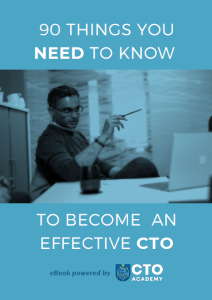Some combinations just don’t work ….
And historically, technologists and customers.
But how times have changed.
Mango will never go with peanut butter but modern tech leaders do now play a central role in the customer engagement process and helping convert potential clients.
This article unpacks what a techie needs to understand when communicating with non-technical customers.
Historically the CTO and tech team might have been allowed to stay out of view, without need or indeed interest in seeing let alone conversing with the customer. Certainly no need to be proactive, leave that active listening stuff for sales and marketing.
How times have changed. How the client relationship has changed.
Today’s tech leaders are often needed (and should be demanding) to be in the front line, understanding and embedding customer needs, priorities and business needs within the DNA of the product.
And of course they should. The process of validated learning (most famously advocated within the Lean Startup methodology) is now business critical for companies and products to survive, let alone prosper.
Where it might have been the case that for techie and customer ‘ne’er the twain shall meet’, now it’s an important element of any senior techie job description to discover the customer and market reaction.
That said, it’s not always a comfortable arrangement.
Technical people are great at the technical, but when communicating to non-technical customers who might not know their HTML from API and CSS, the techie is never at ease.
Here are some top tips for communicating to non-technical customers:
From a technical perspective, this is an important assumption when heading into a meeting with unknown customers.
Don’t under estimate how many senior people have limited technical knowledge, even if they’re leading a technical product.
Preparation is always key. If you know who you’re meeting then you should be reviewing their linkedin profile, understanding who they are and what they will view as relevant information.
Get access to internal CRM files and review previous communications with that customer. What do they tell you about the history of this relationship and, the technical know-how of their key people?
If it’s not a technical audience then try to ensure you’re not peppering the conversation with lots of technical jargon. If having to spell everything out in detail is daunting, and you really don’t know the technical expertise of who you’re meeting, think about preparing a product/jargon cheat sheet.
It’s also important to find a balance between delivering sufficient levels of detail to get the message across and, running the risk of meandering off into a technical cul-de-sac. Presentations should be focused on key issues the customer wants to know. They should be driven by brevity, clarity and providing the customer with plenty of opportunities to ask questions.
Sign up for our CTO Academy Newsletter and become a better leader daily.
Really important but often overlooked contrast between the technical and non-technical.
The former are fascinated by process.
The latter by deliverables and business impact.
Whilst you probably find excitement in explaining the process roadmap, they generally want to see only the point of arrival.
Talking about network infrastructures and the multiple languages you’ve worked on through your career, is going to be of little interest to most senior executives and time poor customers.
Talk about what your product can do, rather than focusing on how it works.
What’s the ROI, security, customer experience?
Why is it a step up from previous versions or products?
Why will it change what really matters to the customer, value add and sales.
All of this comes down to communication. To reading people and pitching your knowledge at the right level.
You need to become imaginative and adaptable about how you communicate. What chimes with one person, will be white noise to another. Whereas an email is sufficient for one customer, a detailed presentation will be required with the other.
You cannot be all things to all people, but you can adapt your message to ensure you don’t leave anyone behind.
Another useful skill is to get into the shoes of that customer and try to think ahead about what matters to them, what simple question might lead them/you naturally into other topics. If like a good chess player, you can start to see a few moves ahead, you can box off any concerns, often in advance of them being asked.
WANT TO IMPROVE YOUR COMMUNICATION SKILLS?
Join CTO Academy where courses in Personal Development and Leadership cover issues like these and more.
Find out more about joining CTO Academy.
“The skill set CTOs and IT Managers now require are a world away from what was needed just a few years ago. I have found the CTO Academy training modules to be highly valuable resources, providing broad-based business skills and awareness that are essential for succeeding in the modern workplace.”
Eli Oshorov, Sydney
90 Things You Need To Know To Become an Effective CTO

London
2nd Floor, 20 St Thomas St, SE1 9RS
Copyright © 2024 - CTO Academy Ltd